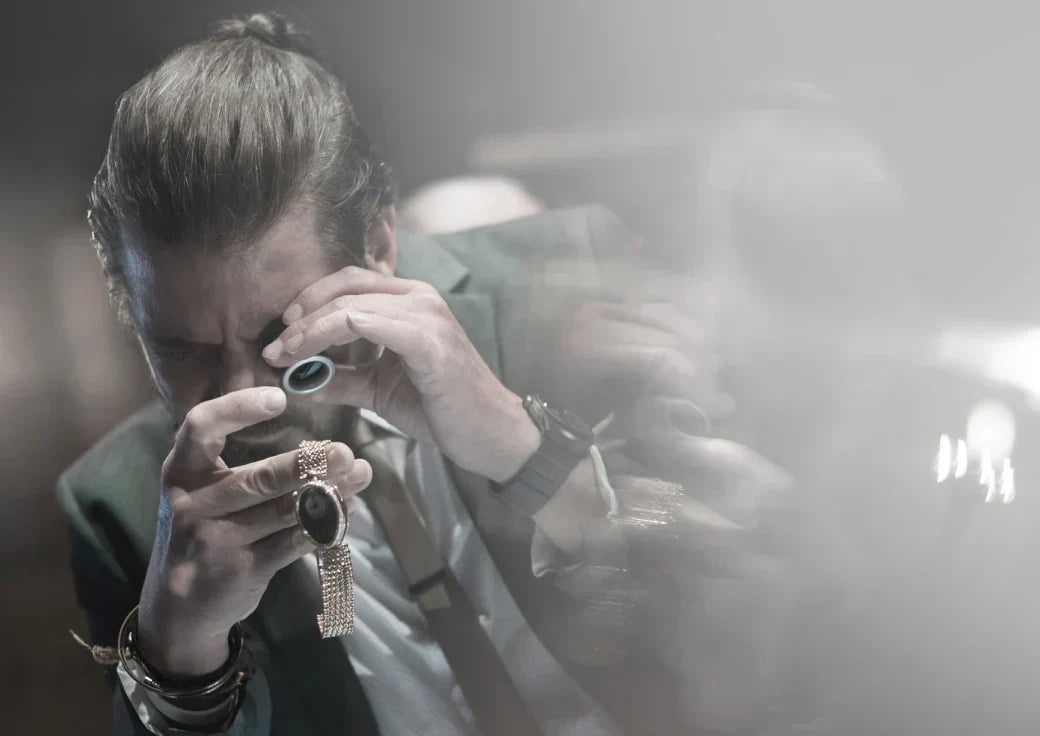At WatchDNA, we believe in building a community that welcomes everyone. Our goal is to assist you on your journey to learn about all things watches.
We recently had the opportunity to sit down with Phillip Plimmer, a watch designer and industry expert, to discuss the current state of affairs and the future direction of his field. With years of experience and a wealth of knowledge under his belt, our guest provided valuable insights into the challenges and opportunities that lie ahead. Whether you're already working in the industry, a watch enthusiast, or just starting out, there's something for everyone in this insightful conversation. So, without further ado, let's dive in!

- What inspired you to become a watch designer, and how did you get your start in the industry?
I started in the automotive industry and did a little part-time lecturing in product design. It was there that a fellow graduate came to present a watch project to the first-year students; we caught up, and I went to see her boss in England, and 20 years later I’m still designing watches. From an early age, I was always interested in accessories and creating unique looks fueled by trends and fashion; I was already a budding low-end watch collector.
- How do you balance aesthetics and functionality in your designs?
Functionality is easy; the design has to tell the time with a specific function or size movement that fits on multiple wrists. So function tends to be quite similar and a small part of the balance, the rest being aesthetics, the more significant and complex part! I would say that’s where the balance is way overweight. I design mainly for a client, so they have an idea of the style of watch they want, where it should fit in with the completion, price point, etc., and then I create multiple designs to choose from that satisfy their request. The balance is always more equal when a client knows in more detail what they want. It’s often easy to go further in aesthetics with my years of experience; the ideas are more plentiful with time (excuse the pun!). A detailed brief is so important; not many know how to give a brief or even what they want; this is such an essential part of the process to get the balance for the aesthetics and function of the final design.

- What do you consider to be the most important elements of a good watch design?
From a designer's point of view, we have to (depending on the style of the watch) put a lot of information on a small surface; this needs to be legible and coherent. I have my favourite watch design style, but I rarely design using it; most people out there want something commercial to satisfy what they've been inspired by with their own take or signature look. There are so many different styles of watch design that please a mass market that I think it comes down to the consumer and what they require in a watch. I'm not a watch snob, and I believe that whether its a 50-dollar watch or a $5,000 watch, as long as you get the look or brand that you want, it's a good watch design.

- Can you walk us through your creative process, from concept to finished product?
Lol! It would take too long to explain, and that’s the magic within the studio; it’s two decades of learning. Enjoyable learning that involves many prototypes and previously produced models to advance knowledge and put it back into the next generation of timepieces.

- How do you stay up-to-date with emerging trends in the watch industry?
Today, there are fewer new trends from well-established watch brands. The industry reinvents the existing or updates old models, changing the colour, material or detail slightly; as a designer, it's disappointing to see and easy to follow. We all talk about a sport, diver, a pilot, dress, classic; large brands tend to sit on what they know best; take ROLEX, for example; what do they really bring in innovation to the market each year? We can do much more to make horology attractive, talk another language, or at least move on from the existing. I like the watches from crowdfunding as they keep the industry exciting and give the consumer a unique product that is usually value for money. Don't get me wrong, I'm selective with this as not all are great from these platforms, but I really think it's good for them; if you can have a go, do it, as long as you enjoy it and don't get into debt! This category is closely linked with micro brands that often launch on these sites; this space is exciting to see; I enjoy and am always positively surprised by the results and quality. It's also a way to keep the industry alive, as reputable, established watch brands will always be there. Still, independent/micro brands seem to have overtaken fashion-labelled watches online. For a little more in the price, you get a vision or story of development and a process instead of a large logo or a fashion label heavily influenced by the market leaders in the watch world.

- How do you approach designing watches for different demographics, such as men versus women or younger versus older customers?
I get into the brand's mindset, targeted design and the audience it's after; naturally, lots of research helps to know the brand you are working with. Throughout my professional life, I've met many designers who prefer one or the other and like to focus on a gender to design for. Naturally, age brings the styling or the development in a different focus. I prefer to create a more masculine or sports watch because there are more areas to explore as they tend to have a complex look. But I do like working on the stereotypical ladies' watch, which is great to design for because it tends to address a more varied amount of materials and a need to be more subtle with how you use them. That saying, times are changing, and there's a much greater demand for unisex watches, and we see males wearing what you might call female watches and vice versa. I've designed a few kids' watches, but I would be very interested in designing more of them in the future. We as an industry need two promote watches to the youth, or in the future, there'll only be a limited amount produced for a much higher cost and a smaller market of enthusiasts and collectors. Here, here keep the watch industry alive!

- How do you incorporate new technology into your watch designs while still maintaining a classic look and feel?
Manufacturers and suppliers often dictate the technology, mainly because of the development and research costs. Once a material or new tech is widely used, the price is significantly reduced then it tends to be overused. I use the technology when it’s available or when a client presents me with it for a specific use in a watch. Incorporating it into a design is enjoyable, and when given a new challenge, the process of creating can be uniquely explored. It is often not a classic look, as the design needs to stand out from the rest of the collection, and if it does need to blend in, then that’s where the skills need to find balance and harmony on the wrist. It’s often the dream projects that use inspirational new material and tech; as a designer, that’s the commissions we’re patient and excited to receive.
- What advice would you give to someone who is interested in pursuing a career as a watch designer?
Go for it, bring something new, this is the time, excuse the pun again! We seem to be constantly going down the same path, create your own DNA, visit small watch fairs to get up and personal with the product, use crowd funding, create a new style or experiment with an alternative language. For me there’s a lot of the same happening that makes the industry a little stale. Even SWATCH recreating the exact same case from OMEGA’s Speedmaster for the Moonswatch with albeit a slightly different dial, an incredible marketing story that finally created some buzz, but apart from the material and color not so ground breaking in design.
- What upcoming projects are you currently working on, and what can we expect to see from you in the future?
Sorry, I can’t say; for 99% of my clients, I sign NDAs, and I would never talk about upcoming projects or brands out of confidentiality and respect. I appreciate the faith my clients provide in ASPECT DESIGNING for creating the many different designs that come out of the studio. The company has been going for less than five years, and in the past few years of challenging health and a declining retail environment, I believe I’m very privileged to continue doing what I love and believe in. One day I hope to launch my brand to address some of the points in the questions I’ve answered. It will be interesting to see if they are relevant in this challenging climate of analogue versus smart/connected (and even mobile phone) users.

- What is one of your favourite model that inspired you, and what brand or individual would you love to work with?
Far too many to think of! The brand that’s always been there, on the whole, is PANERAI, but after following them for over 25 years, they disappointingly don’t change the identity of the primary collection so much; I was drawn to them because of their recognizable identity, bold looks and play with material, I love the limited editions and complicated movements that they still produce though. CASIO is a big favourite because it creates contemporary-looking watches for the urban wearer that are instantly recognizable. They are affordable, diverse and adventurous, with a success story still running in their vintage and new models. URWERK & RICHARD MILLE are brands that genuinely inspire me, the amount of detail they create is incredible, and I’m always excited to see what’s next.
Along with PANERAI, they are the brands that I can only dream of working with, but who knows one day; I can aspire to work with a client with the vision to compete alongside such excellent timepieces and not just copy them. A new brand to the playing field is VANGUART, who produce stunning watches with a modern feel; the way they present and market the product is fantastic, which comes at a high price for one to invest in. I‘m excited to see what happens after their recent launch collection; they give me hope for the industry and the future of innovation within the watch world.
If you are looking to design your next timepiece feel free to reach out to him:
Phillip Plimmer
Freelance Watch Designer
Phillip@aspectdesigning.com
Linkedin









